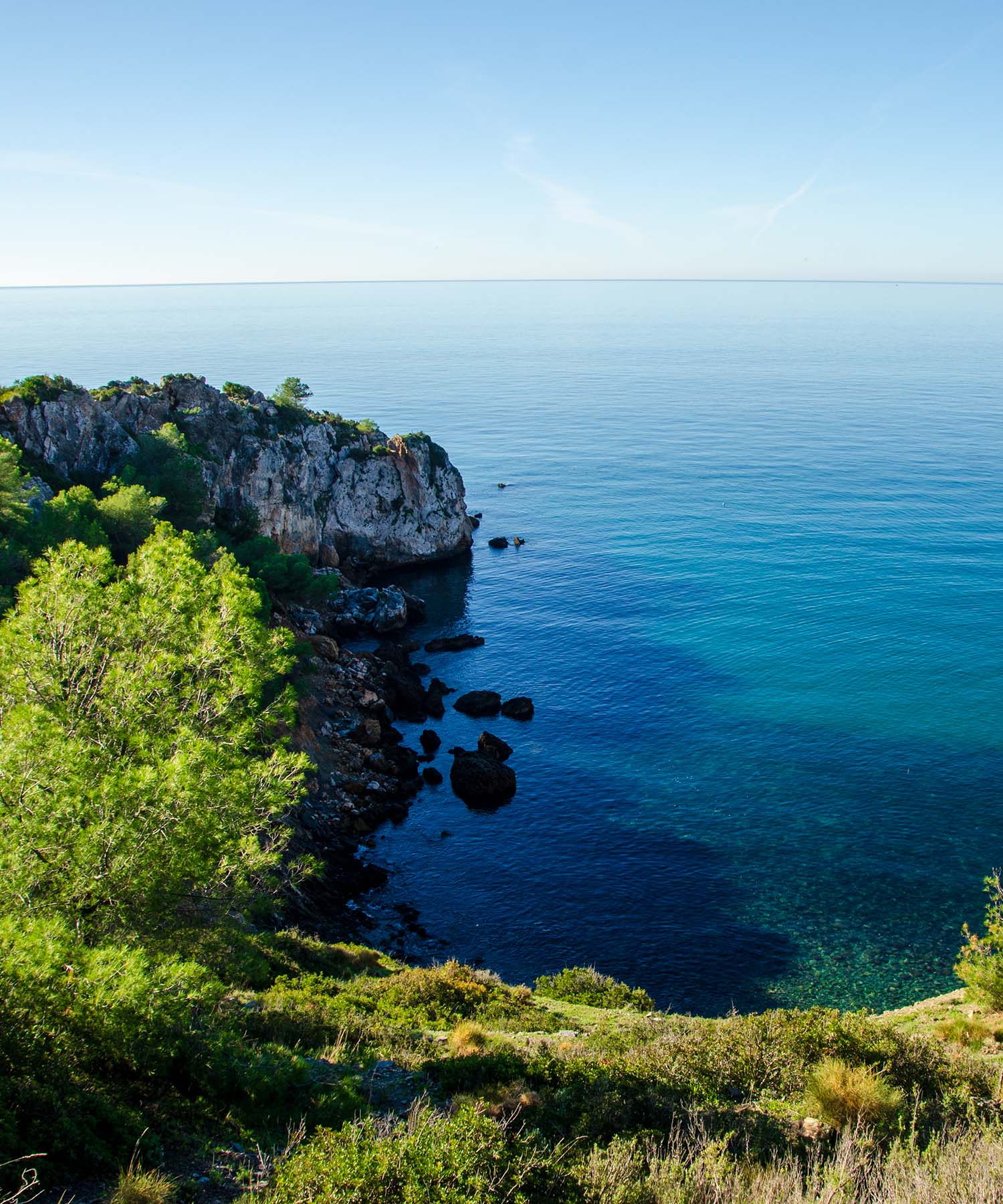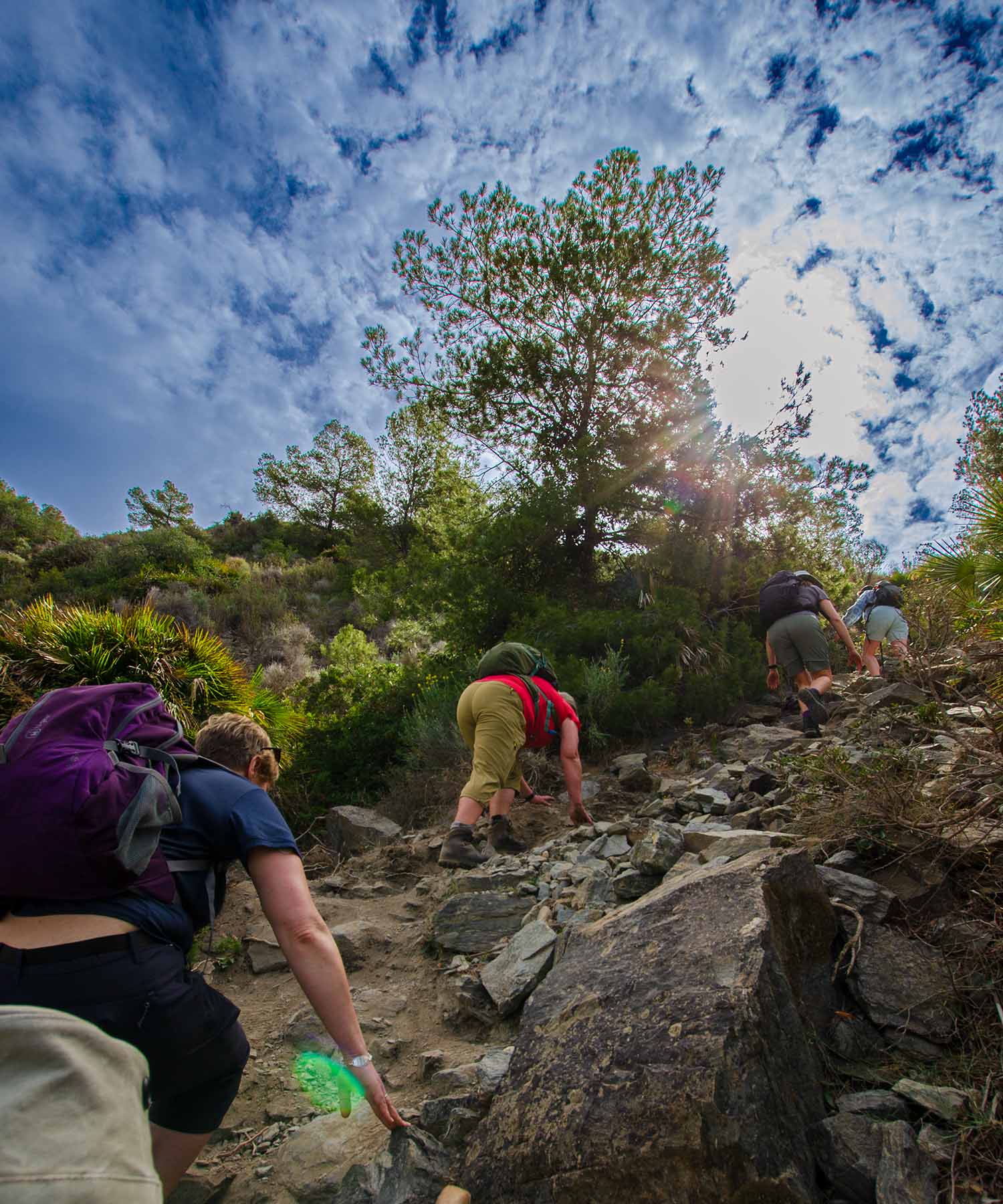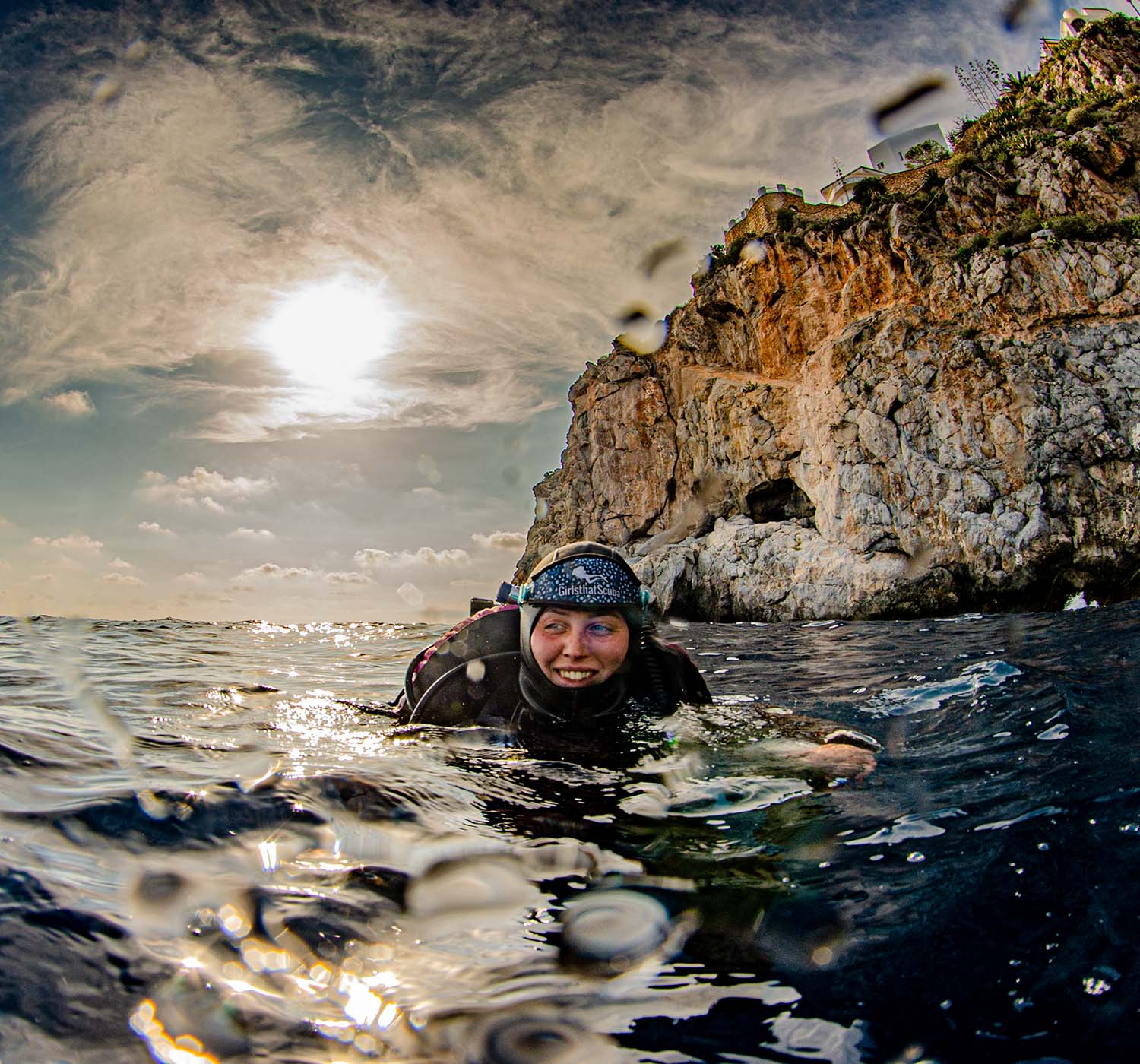Why Winter Sun
I understand the challenge of enduring long winters in the northern latitudes. While a sunny day can provide temporary relief, why not consider breaking up the long winter with a weekend walking trip to the Axarquía region of Malaga?
This region boasts the best climate in Europe.
I've chosen the very picturesque and charming town of Nerja as your base. In the evenings, you can enjoy a meal at a restaurant in the old town and then take a delightful walk along the famous Balcon de Europa, with its spectacular views over the Mediterranean Sea and the dramatic coastline.
Nerja is also at the eastern end of the Province of Malaga and part of the very enthralling traditional Axarquía region, where the limestone mountains of the Sierra de Almijara abruptly meet the sea.
This is a magnificent area for walking, relaxing, eating, and soaking up the Andalucían way of life.
Ancient seafarers, Barbary pirates, and a Moorish stronghold.
The three walks during this holiday offer a diverse experience of Axarquía. The first walk starts from what was voted the most beautiful village in Spain to the sailor Francisco de Pinto monument. The second walk is inland at the historic town of Comares, where we ascend to the village from the north, enjoying sights such as the Roman Path, Watchtower, Aljibe, and stunning Balcon de Axarquía. The third walk undulates along the coast, dipping between the beaches and high above the secluded coves that link the defensive watchtowers.
Sierra de Almijara
The Cruz de Pinto and Watchtowers walks are in the southerly reach of this mountain range. The Cruz de Pinto walk is along the final spur between the Rio's Chillar and Higuerón, and our Watchtowers walk is along the coastline where the mountains finally meet the sea.
The Almijara mountain range is the largest in the natural park of the Sierras de Tejeda, Almijara, and Alhama. To the south, it is attached to the Competa mountain range, with Cisne (1481 metres) as the most significant elevation. To the north is the Sierra de Jata, whose highest altitude is Cerro de la Chapa (1818 metres), and to the west is the Sierra de Tejeda, with La Maroma (2068 metres) as the highest point in the natural park.
The Almijara mountain range extends northwest-southeast, with the mountain of El Lucero, the most distinguishing peak, dividing the area into two parts. The western section is much steeper but softens as it reaches the end of the range to the east.
A visiting walking guide once described these mountains as 'brutal', referring to their monochrome colour, steep and sheer rocky sides, and often impassable deep ravines. But on the lower slopes and closer to the coast, amongst the small villages and towns, where the forests of Aleppo pines populate the areas in between, it offers a warm and inviting welcome for walkers.
Well-established trading routes linking the villages and towns date back to when mules transported fish, fruit, and vegetables. These routes now make excellent walking paths. Even the narrow paths within the mountains offer good movement over the ground.
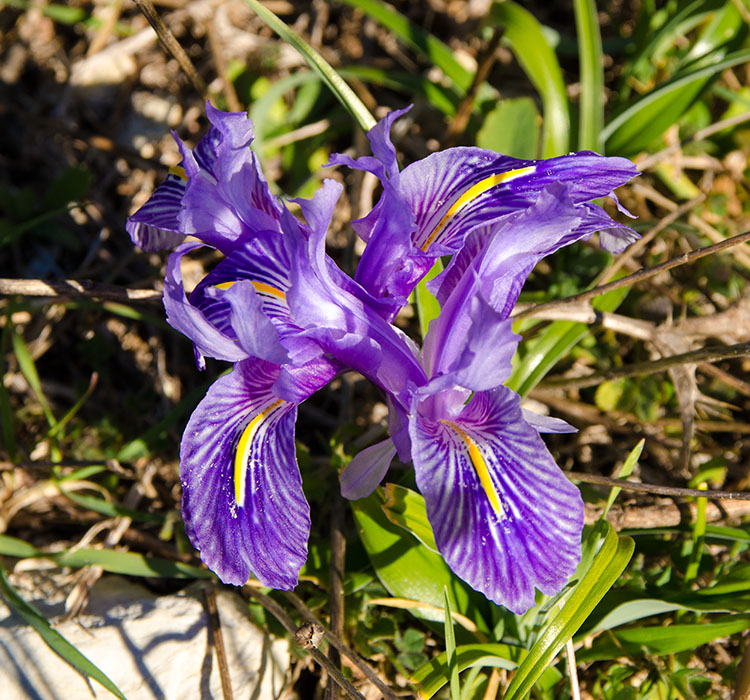
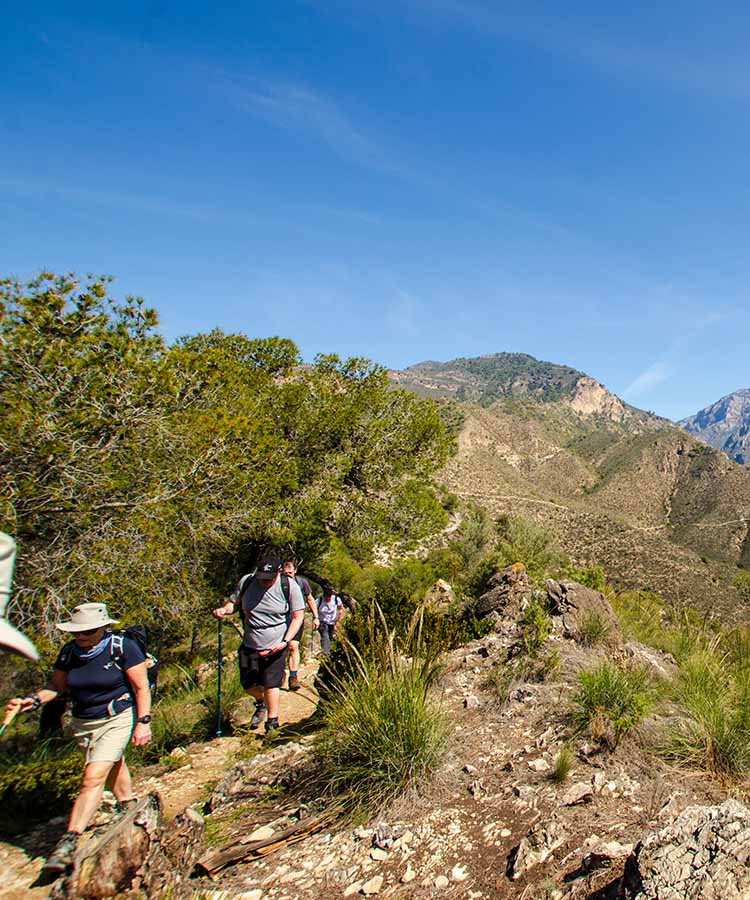
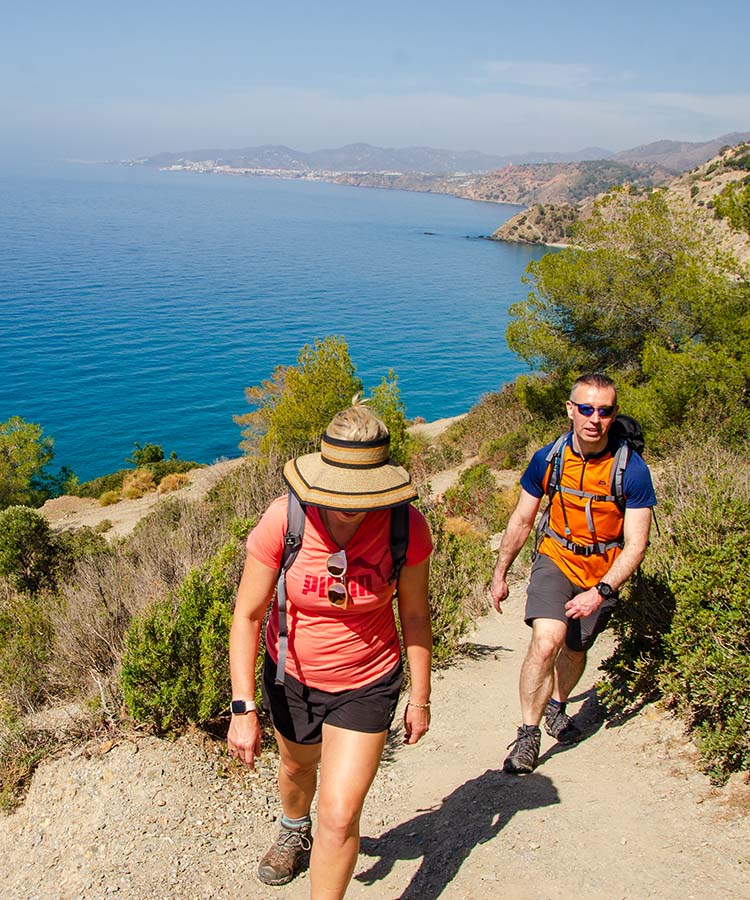

Cruz de Pinto and Frigiliana
If you have stayed in Nerja, you will know of or have visited Frigiliana. Winner of the first 'Most Beautiful Village In Spain' competition in 1982, it has become a significant tourist attraction.
I avoid overly touristic places, but an exception must be made for Frigiliana. Its location, history, beautiful narrow streets, and quaint buildings deserve a visit.
Frigiliana is a confluence of this area's natural beauty, historical links, and cultural importance. The old town, which we will briefly tour before starting the Cruz de Pinto walk, offers a window into the past. The narrow streets are decorated with ceramic mosaics, giving a glimpse of the Moorish old quarter.
In the main square is the 16th-century Renaissance Palace, El Ingenio, which now houses a sugar cane factory, and I believe it is the only one in Europe.
Frigiliana also had a series of irrigation channels, Acequias, that once powered the mills that produced sugar and paper and provided crop irrigation. The Acequia de Lizar, which stretches far up into the mountains and is itself an exciting walk, is still operating and visible during our walk.
Frigiliana was also part of the trading route that transported produce from the coast into the mountains. Only a few kilometres further inland, on the mule route, is the atmospheric village of Acebuchal, known locally as the "Lost Village." It serves as a poignant reminder of the dark past of the Spanish Civil War.
Leaving Frigiliana, our walk starts in the very peaceful and often shaded ravine of the Rio Higuerón (Fig in English; yes, we will pass several fig trees later in the walk).
As we progress along this oft-dry riverbed, we will pass the remnants of a paper mill, long eroded by time, but where the catchment pool that once drove the horizontal wheel is still being used.
If we've had significant rain, the Acequía (irrigation channel) may have water running in its course. Still, a glance much higher up to the western wall above the river should reveal the exciting waterway of the Acequía de Lizar, which feeds water into the town.
With our legs warmed up, we leave the riverbed and climb to the ridge separating the Rio Chillar and Higuerón. From there, we'll head south to the Cruz de Pinto monument. The views as we walk along this ridge are spectacular; north and east reveal the canyon of the Rio Chillar, flanked by steep mountains, leading up to the dramatic southern face of La Cadena.
Stretching to the west, we see the softer faces of the southern approach to the highest mountain in Malaga, La Maroma. Continuing west are the mountains of the Central Limestone Arch.
Tracking south, the deep blue Mediterranean Sea fills our horizon, and the monument’s cross is visible at the end of this ridge.
The Cruz de Pinto is a small sanctuary. According to local legend, the navigator Francisco de Pinto built it in 1643. It sits atop the final spur that separates the Rios Higueron and Chillar. Legend has it that Francisco de Pinto was off the coast of Nerja in command of three ships that had left the Italian city of Verona bound for Cádiz when, after a terrible storm, they began to sink.
San Francisco de Pinto, desperate, asked God for help, promising that if he saved his life and that of his crew, he would build a sanctuary on the highest mountain that he could see after the storm, and so it was.
When the sea calmed down, the place chosen was what we know today as "Cruz de Pinto". Since then, this sanctuary has been of great importance and worship in the spiritual life of Frigiliana.
The walk finishes back up the Rio Higuerón, and to add one final zip of excitement, we find ourselves in a narrow canyon, with the walls eroded by thousands of years of water, where we need to scramble over a few rocks and boulders, and where we may be surprised by how many figs are laying along our path, washed down from any previous rains.


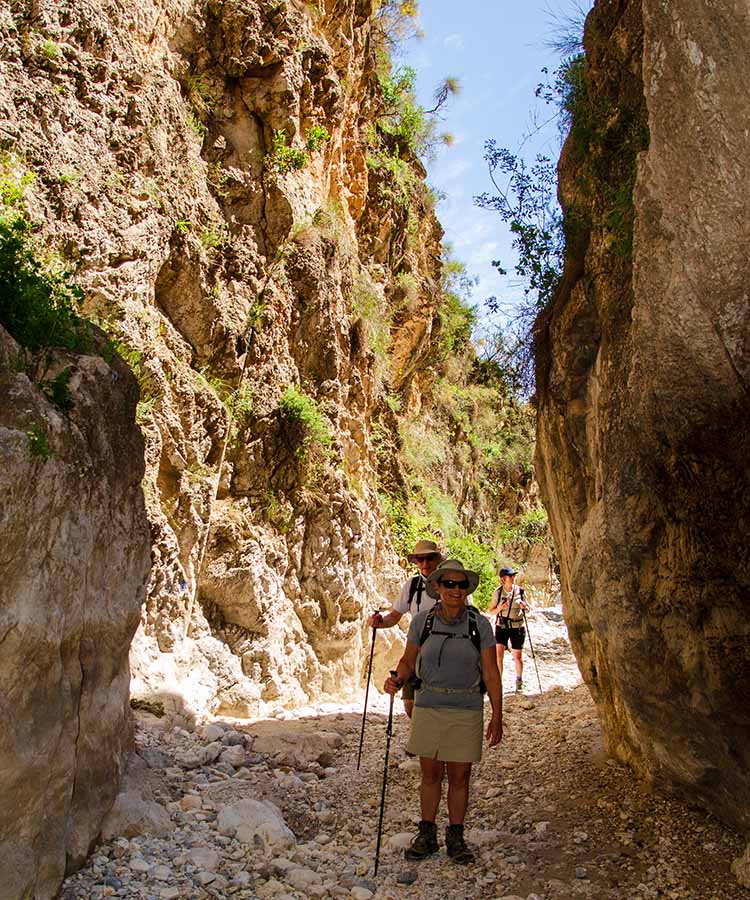
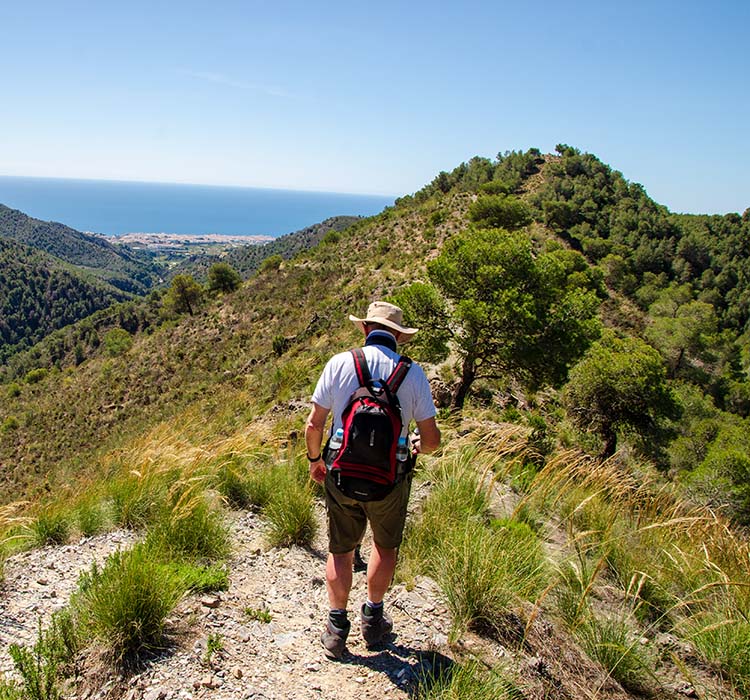
Moorish Hillfort of Comares
The walk to Comares is one of my favourites, so I offer it within several walking holidays. The town sits on the western side of Axarquía, on the last ridge that drops away from the Montes de Malaga Natural Park. From this vantage point, the entirety of the valley can be surveyed.
The walk starts in the valley north of the town. As we slowly make our way up through the olive groves and pass the lemon and orange trees that occasionally grow between them, the view opens up, and we can appreciate the magnificence of the mountains we had been walking in only the day before.
To our north are the mountains that form part of the Central Limestone Arch, and on its easterly end is the pass of Zafarraya. This pass is not part of our weekend walks, but as it is such a prominent natural feature, with the gap in the mountains that allows passage onwards so striking, and as it is visible from Comares and very evident when we stand at the eastern edge of the cemetery, it deserves mention.
The pass has many connections with the past: from the Moors, who built the fortress of Zalia to guard this vital trade route, to the consortium of Belgian businessmen who, in the early 20th Century, financed a narrow-gauge railway that was to run between the cities of Malaga and Granada.
But for our Neolithic hunters, who no doubt used this pass to move between the coastal and mountain areas, the caves and caverns in the nearly vertical walls of the rockfaces on either side of the gap offered a temporary home. One excavated cavern indicates use dating back 40,000 years.
Arriving at Comares, we see that it is perched atop a narrow rocky ridge. From this imposing location, you realise why the Moors built a defensive fortress here as early as the 8th Century.
Comares is one of three castles built in the Axarquía region, of which the others, Bentomiz and Zalia, are visible from Comares. The fact that the Moors built three fortresses in such proximity indicates how important this area was, no doubt protecting the Pass of Zafarraya, a vital trading route towards Granada.
There is little left of the fortress in Comares other than a Watchtower, which would have once guarded the only approach into the compound. However, a very peaceful and beautiful cemetery now occupies this position, and tucked away in the corner, the old Aljibe (water well) can still be viewed.
Scattered across the narrow ridge are the white-painted houses that make up the town and would have been in the area that was once outside of the fortress. It is a charming town in an impressive location.
In the town's central plaza is the Balcon de Axarquía, which offers breathtaking views to the south, overlooking the coast, and to the east, where La Maroma, the highest mountain in the province of Malaga, can be seen.
Exploring this town's small passages and streets will reveal other hidden gems, such as several small arches believed to date back to the Moorish period. You can also find the Plaza de Verdiales, where a traditional local festival is held once a year, and the Calle de Perdon, where the Muslims who were captured during the reconquest were pardoned in exchange for renouncing their religion.
No visit to Comares is complete without a stop in the Café Bar Tres Balcones, where we enjoy a superb range of tapas and cool drinks in the shade of this narrow street.
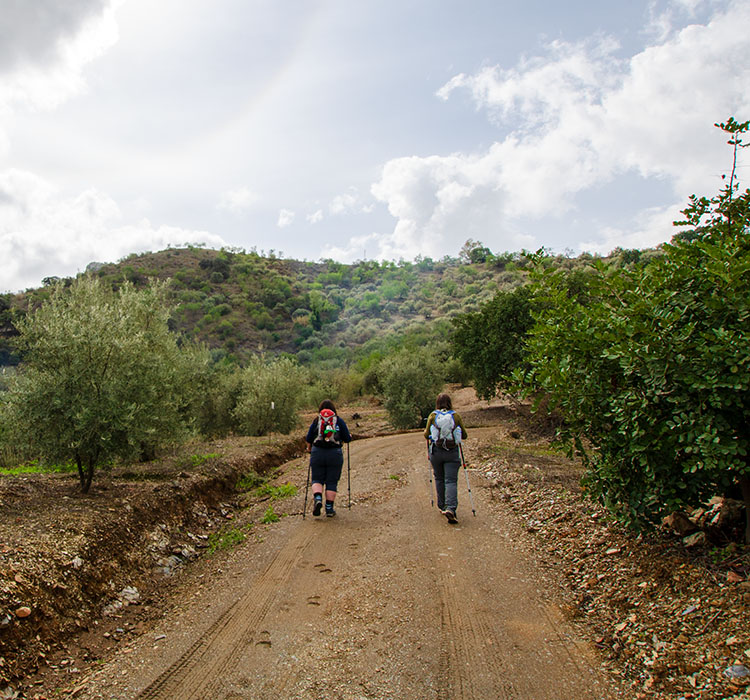
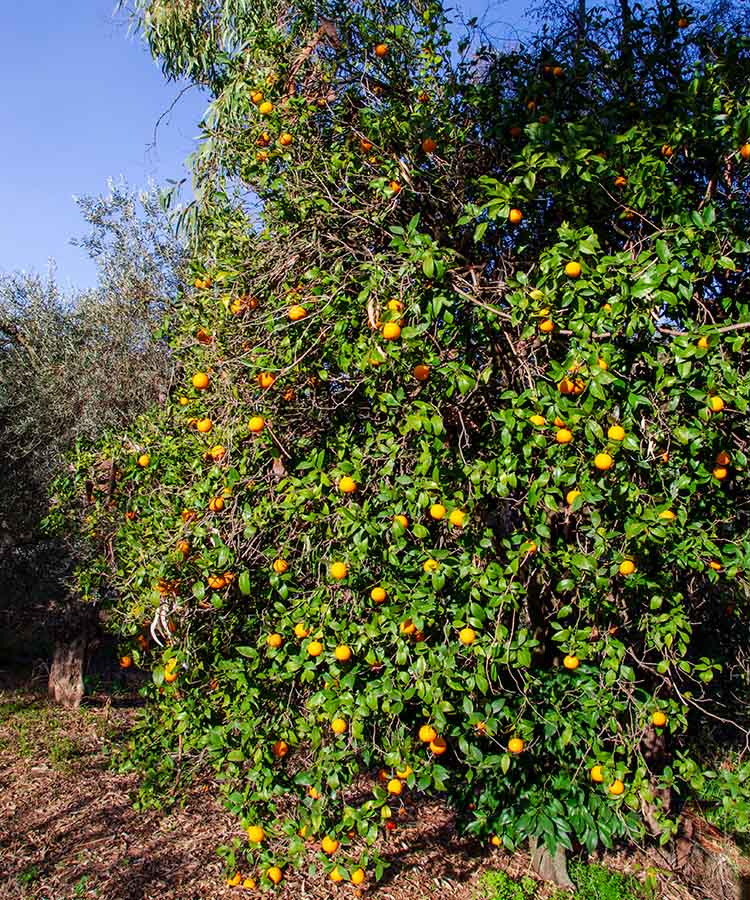
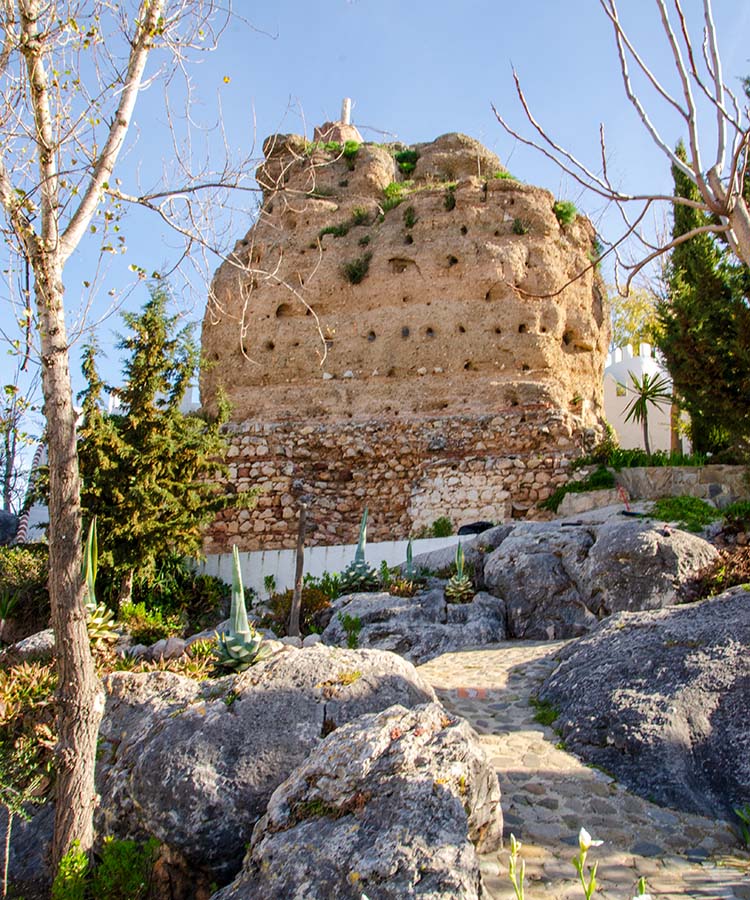

Coastal Watchtowers of Andalucía
Many of the watchtowers that can be seen along the Andalucían coast have Moorish origins, as most were constructed by the Nasrid dynasty of Granada after 1250. Some were built (or reconstructed) by the Christians in the early 1500s, with a particular focus on the Kingdom of Granada.
This was shortly after the Moors were defeated and expelled in 1492. The coast, being depopulated, required special protection from incursions.
Over half the towers constructed have lasted to the present; due to their remarkable solid construction and use up to the middle of the 20th century, they have been possible to maintain.
The towers from the Moorish or early Christian periods are identified as rectangular or cylindrical in shape with vertical walls. In contrast, those constructed or reconstructed after 1570 are slightly conical.
The primary aim of the towers was to watch for incursions and signal warnings so the local inhabitants could go into hiding. The warnings were smoke from a fire of damp straw by day and light from a dry straw fire at night.
After 1518, the attacks increased mainly due to barbary pirates, admirals of the Ottoman Sultan based in North Africa, conducting war operations for political ends. Initially, the pirate raids concentrated on shipping but later escalated to land raids. They were slave hunters, and their methods were ferocious, capturing young people for the Ottoman slave trade.
The watchtowers were generally manned by a Captain and two or three soldiers supported by local 'towermen' employed for housekeeping duties. A common feature that can still be noticed today is a rough opening or 'hole' at a high level. This was the 'door' of the tower, which was reached from outside by a lowered rope ladder.
This entrance level is generally the only room with a domed ceiling and stone stairs to a rooftop terrace. The fire for the day smoke signals were made in a fireplace in this room, which had a chimney on the roof. The fire for the night light was made on the roof.
By the 1700s, the towers had become defensive, and many were supplied with four-pound cannons. The old towers were surveyed. Installing one or two four-pound cannons required strengthening the roof and lowering the parapet.
Most towers also had a 'garita' (guard post) on the roof added with an embrasure (slit-shaped window) for rifle shooting. Many towers also had an overhang added to the roof parapet wall above the entrance, which was for pouring boiling oil onto would-be attackers.
After 1829, many towers became Casa de Carabineros posts. This was the Spanish armed corps whose mission was to monitor coasts and borders and repress smuggling. Adjoining or nearby barracks were constructed. In 1940, these posts were assumed into Guardia Civil barracks.
The first law in Spain was introduced in 1949 to protect defensive architectural heritage. In 1985, Spain's historical patrimony law came into force, and the watchtower towers were listed by the regional government and declared 'Bien de Interés Cultural'.

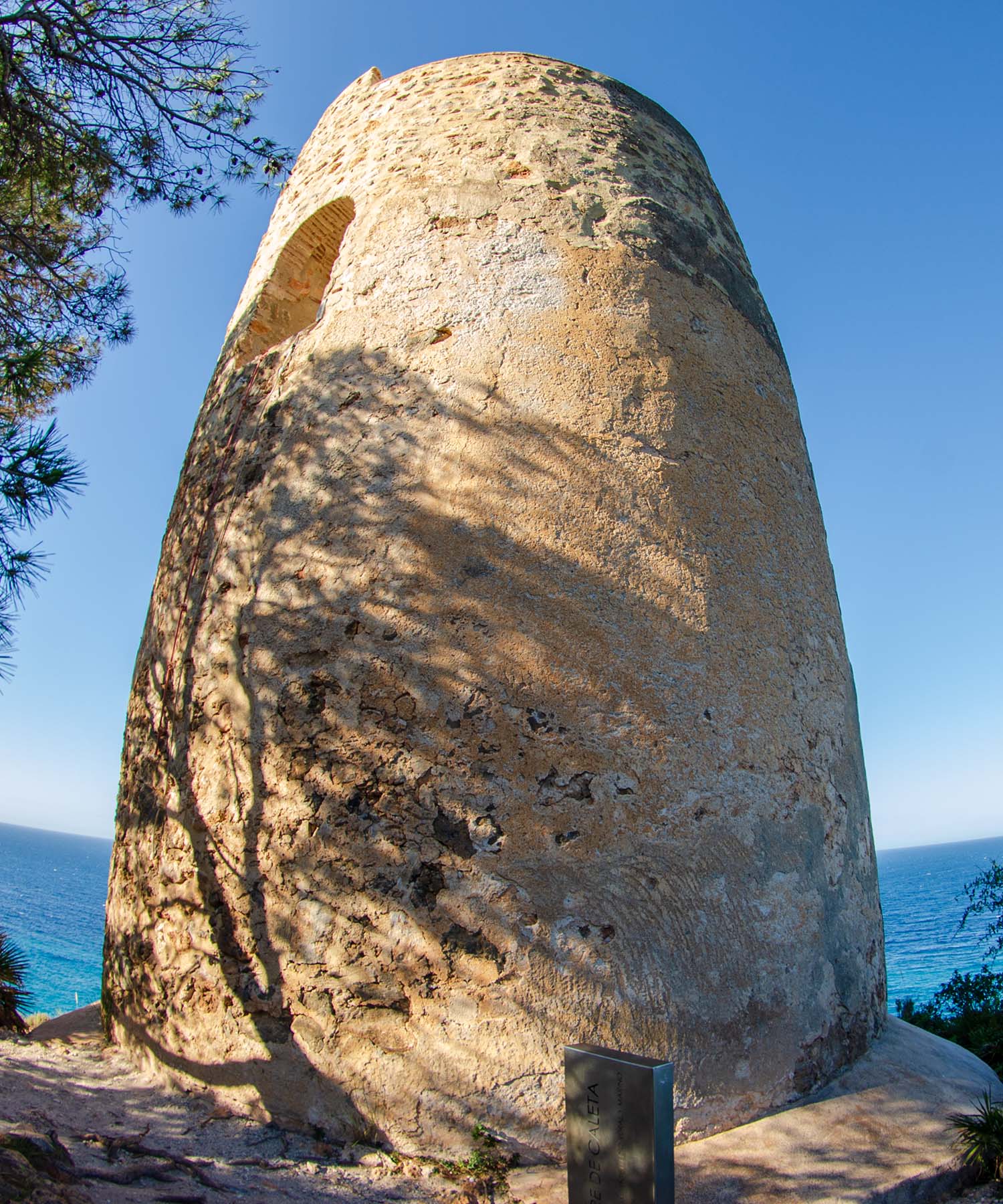
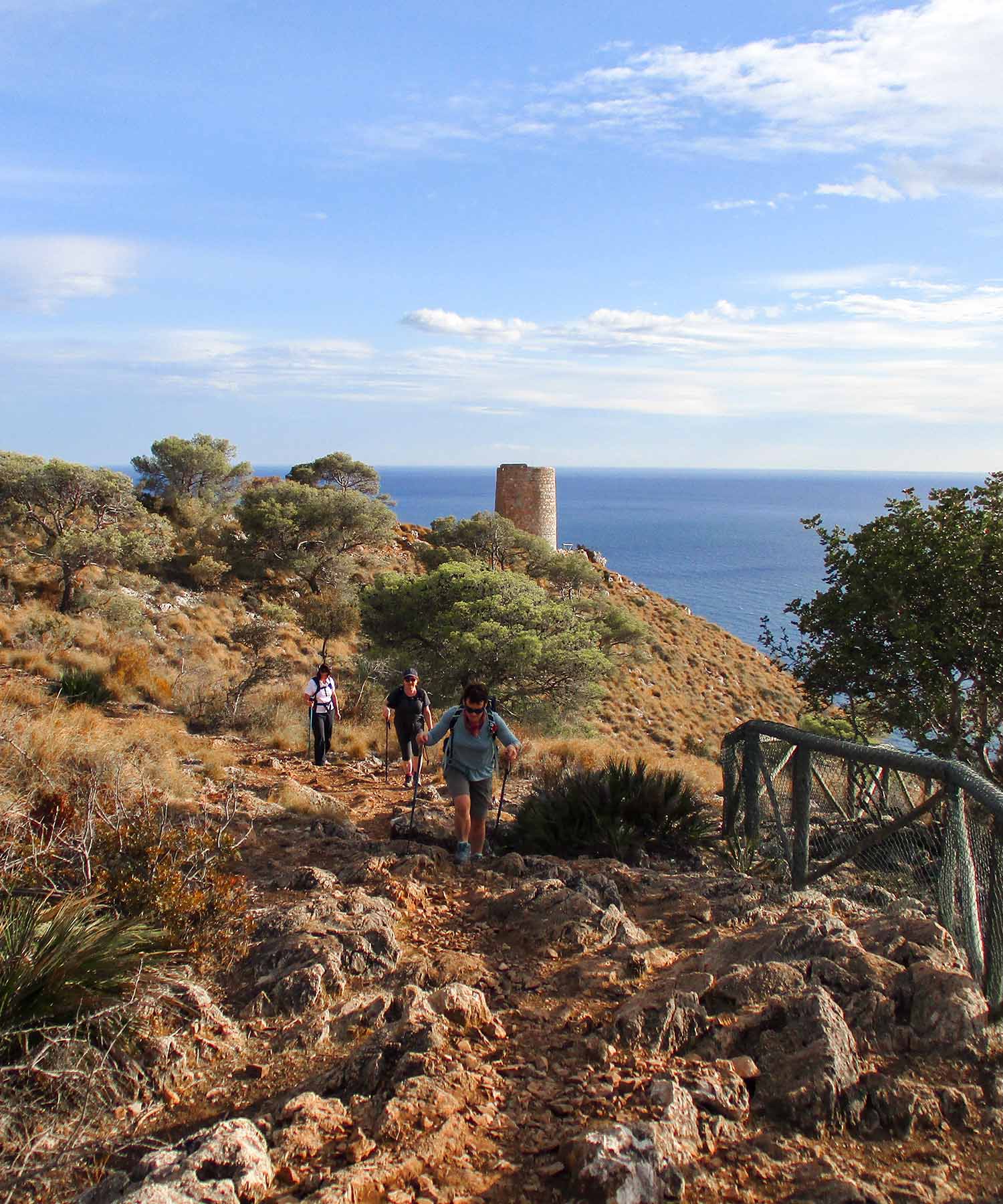

The Maro/Cerro Gordo Natural Park
This is a unique stretch of near-virgin coastline, which runs 12km east of Nerja to La Herradura and covers an area of 1,815ha, including a protected part offshore. Its dramatic rocky cliffs (acantilados) plunge to the sea, leaving a few sheltered bays with beaches in between, which can be accessed via staircases or tracks.
Located on the very edges of the Sierra Almijara, these limestone outcrops have been eroded by the sea and weather into fantastic shapes, with offshore stacks, arches, and undersea caves like the Cueva de los Genoveses and the Cueva de la Cajilla.
Starting our walk from the Cañuelo beach, we will journey through this spectacular coastal landscape towards the cliffs of Cerro Gordo. The panorama comprises cliffs interspersed with beaches and small coves that are difficult to access. At the same time, impressive, cultivated terraces hang at great heights on the mountain slopes.
As we travel between the beaches, we will encounter pockets of Aleppo pine and areas covered with thermo-Mediterranean scrub. This will allow us to observe rare species. One is boxwood (Buxus balearica), a toxic shrub that withstands extreme temperatures and can live for more than five hundred years.
The presence of birds is constant, mainly marine or coastal birds, and there are numerous species that we can observe, including birds of prey.
As we move along the track, encountering the Southern Spanish Ibex is not uncommon. Sometimes, it's on the path, and other times, it's clinging precariously to the near vertical rockface.
The natural park also has a designated underwater strip one nautical mile wide parallel to the coastline, which is of great ecological value.
If you are fortunate enough to dive in this protected area, whether from beaches like Cantarriján or a chartered dive boat from La Herradura, the natural park contains caves and steep bottoms where a large number of plant species live, accompanied by a wide variety of marine fauna.
In its shelter, corals, sponges, and a multitude of invertebrates coexist with a wide variety of fish, some brightly coloured, such as the Cuckoo Wrasse or the Yellow Triple Fin Blennie, and others simply spectacular, such as the silver sunfish (Mola Mola).
The few patches of Posidonia Oceanica meadows stand out for their uniqueness. They are mere testimonies of a much more favourable past and should serve as a severe warning to avoid its total disappearance.
All the pictures in his article were taken during January, February, and March; as they depict, we get some astonishingly good weather. Of course, there are days when the clouds cover the sun and rain falls from the heavens, but these are infrequent. I may move the itinerary around to ensure a safe day out or choose a different walk. I try to make sure that rain doesn't stop play.

